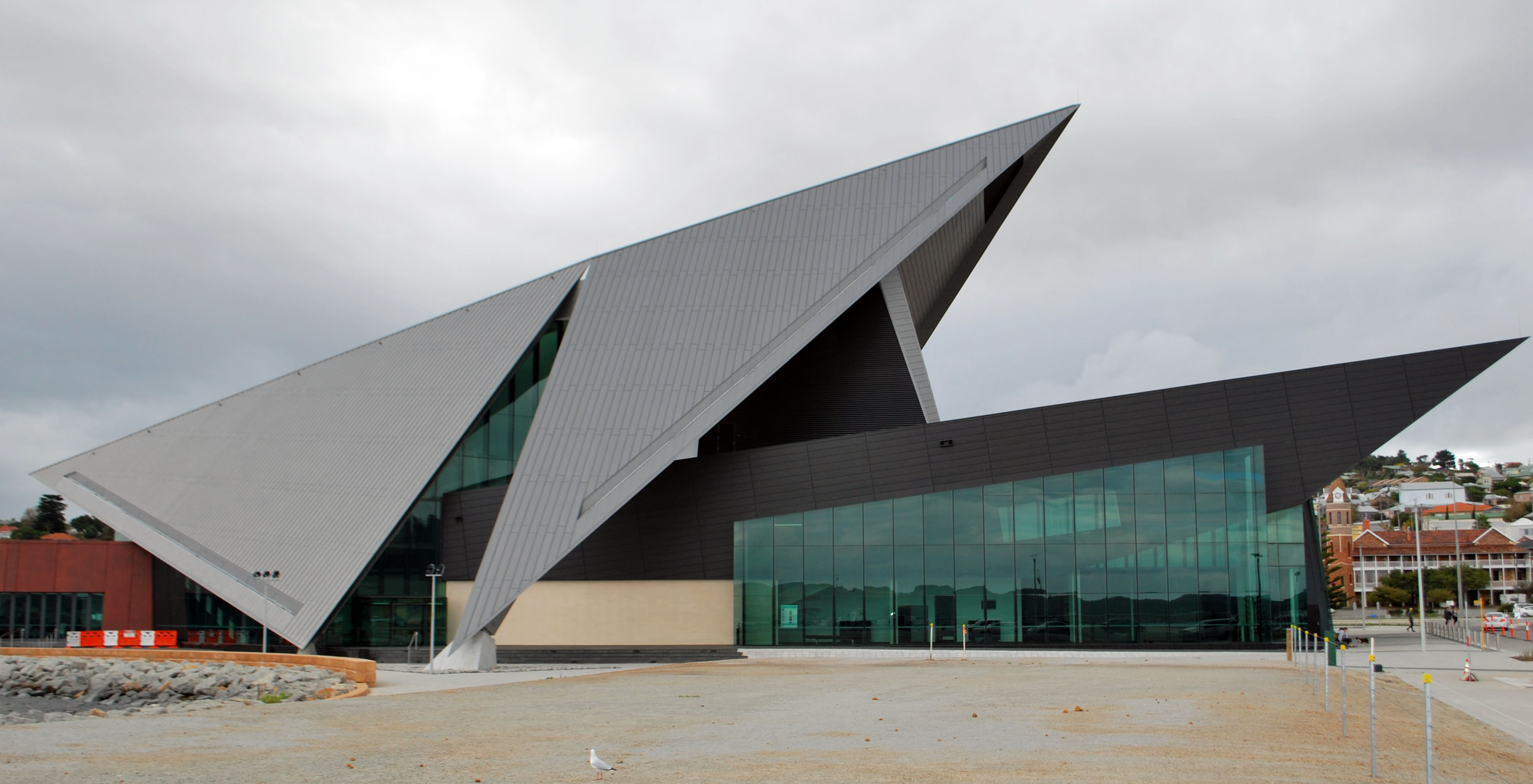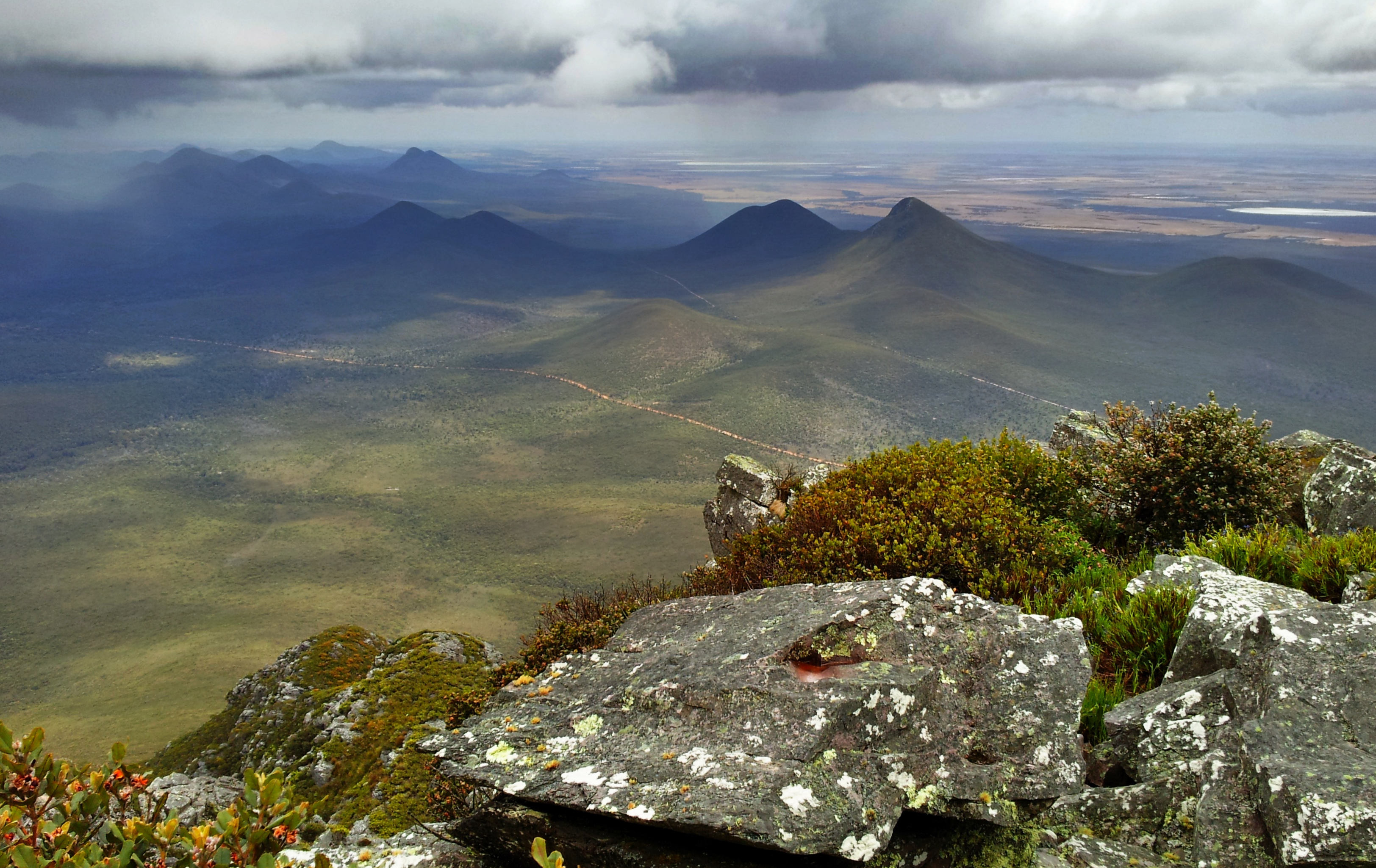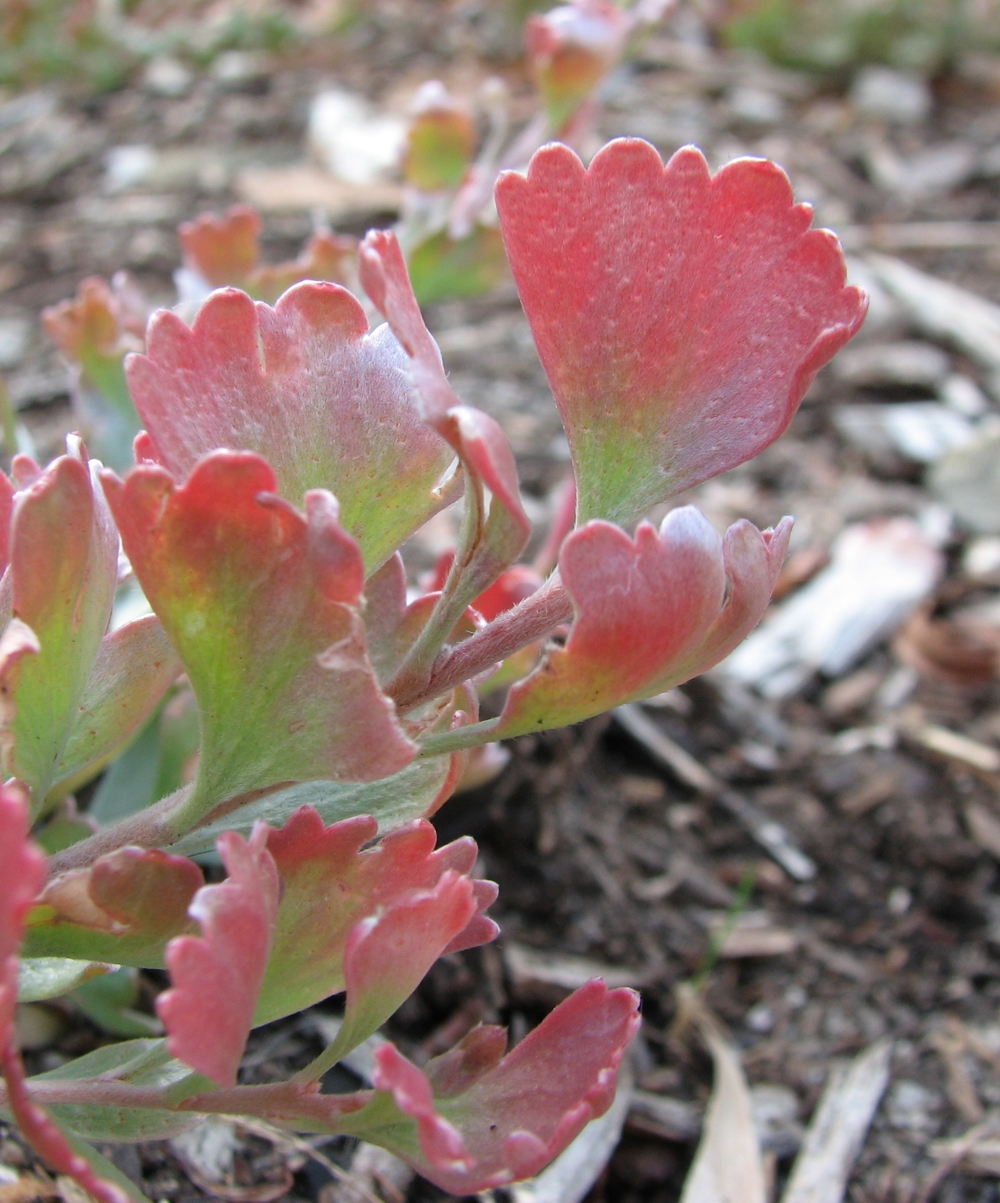|
Banksia Seneciifolia
''Banksia seneciifolia'' is a species of column-shaped shrub that is endemic to the south-west of Western Australia. It has linear, pinnatifid leaves, yellow flowers in heads of about twenty-five, and narrow egg-shaped follicles. Description ''Banksia seneciifolia'' is a column-shaped shrub that grows to a height of but does not form a lignotuber. It has linear, pinnatifid leaves long and wide on a petiole up to long. There are between two and five linear lobes up to long on each side of the leaves. About twenty-five yellow flowers are arranged in heads surrounded by linear, tapering, hairy involucral bracts up to long at the base of each head. The perianth is long and curved downwards, and the pistil is long and also curved downwards. Flowering occurs from July to August. A single, narrow egg-shaped follicle long forms in each head. Taxonomy and naming This species was first formally described in 1830 by Robert Brown who gave it the name ''Dryandra seneciifolia'' ... [...More Info...] [...Related Items...] OR: [Wikipedia] [Google] [Baidu] |
Robert Brown (botanist, Born 1773)
Robert Brown (21 December 1773 – 10 June 1858) was a Scottish botanist and paleobotanist who made important contributions to botany largely through his pioneering use of the microscope. His contributions include one of the earliest detailed descriptions of the cell nucleus and cytoplasmic streaming; the observation of Brownian motion; early work on plant pollination and fertilisation, including being the first to recognise the fundamental difference between gymnosperms and angiosperms; and some of the earliest studies in palynology. He also made numerous contributions to plant taxonomy, notably erecting a number of plant families that are still accepted today; and numerous Australian plant genera and species, the fruit of his exploration of that continent with Matthew Flinders. Early life Robert Brown was born in Montrose on 21 December 1773, in a house that existed on the site where Montrose Library currently stands. He was the son of James Brown, a minister i ... [...More Info...] [...Related Items...] OR: [Wikipedia] [Google] [Baidu] |
William Baxter (botanist)
William Baxter (born 1787 - died between 1830 and 1836) was an English gardener who collected in Australia on behalf of English nurserymen and private individuals. He had developed his horticultural reputation as gardener to the Comtesse de Vandes in Bayswater, London, many of the plants he had nurtured being used for illustrations in ''Curtis's Botanical Magazine''. He was the first privately financed plant collector to be sent to Australia, his mission being to collect seeds and roots for the London seedsman F. Henchman.Clough, 2002. ''The Oxford Companion to Australian Gardens''. Oxford University Press: Melbourne. p. 79. Baxter's collections were made at Kangaroo Island (1822–1823), the southern coast of Western Australia (1823–1825), at King George Sound, Cape Arid and Lucky Bay, Twofold Bay, and Wilsons Promontory, Victoria (1826). The final expedition to Western Australia (1828–1829) was arranged by Charles Fraser. On his return they disagreed about the distribution o ... [...More Info...] [...Related Items...] OR: [Wikipedia] [Google] [Baidu] |
Banksia Ser
''Banksia'' is a genus of around 170 species in the plant family Proteaceae. These Australian wildflowers and popular garden plants are easily recognised by their characteristic flower spikes, and fruiting "cones" and heads. ''Banksias'' range in size from prostrate woody shrubs to trees up to 30 metres (100 ft) tall. They are found in a wide variety of landscapes: sclerophyll forest, (occasionally) rainforest, shrubland, and some more arid landscapes, though not in Australia's deserts. Heavy producers of nectar, ''banksias'' are a vital part of the food chain in the Australian bush. They are an important food source for nectarivorous animals, including birds, bats, rats, possums, stingless bees and a host of invertebrates. Further, they are of economic importance to Australia's nursery and cut flower industries. However, these plants are threatened by a number of processes including land clearing, frequent burning and disease, and a number of species are rare and endangere ... [...More Info...] [...Related Items...] OR: [Wikipedia] [Google] [Baidu] |
Department Of Parks And Wildlife (Western Australia)
The Department of Parks and Wildlife (DPaW) was the department of the Government of Western Australia responsible for managing lands described in the ''Conservation and Land Management Act 1984'' and implementing the state's conservation and environment legislation and regulations. The minister responsible for the department was the Minister for the Environment (Western Australia), Minister for the Environment. History The Department of Environment and Conservation (Western Australia), Department of Environment and Conservation (DEC) was separated on 30 June 2013, forming the Department of Parks and Wildlife (DPaW) and the Department of Environment Regulation (DER), both of which commenced operations on 1 July 2013. DPaW focused on managing multiple use state forests, national parks, marine parks and reserves. DER focused on environmental regulation, approvals and appeals processes, and pollution prevention. It was announced on 28 April 2017 that the Department of Parks and Wi ... [...More Info...] [...Related Items...] OR: [Wikipedia] [Google] [Baidu] |
Declared Rare And Priority Flora List
The Declared Rare and Priority Flora List is the system by which Western Australia's conservation flora are given a priority. Developed by the Government of Western Australia's Department of Environment and Conservation, it was used extensively within the department, including the Western Australian Herbarium. The herbarium's journal, '' Nuytsia'', which has published over a quarter of the state's conservation taxa, requires a conservation status to be included in all publications of new Western Australian taxa that appear to be rare or endangered. The system defines six levels of priority taxa: ;X: Threatened (Declared Rare Flora) – Presumed Extinct Taxa: These are taxa that are thought to be extinct, either because they have not been collected for over 50 years despite thorough searching, or because all known wild populations have been destroyed. They have been declared as such in accordance with the Wildlife Conservation Act 1950, and are therefore afforded legislative prot ... [...More Info...] [...Related Items...] OR: [Wikipedia] [Google] [Baidu] |
Albany, Western Australia
Albany ( ; nys, Kinjarling) is a port city A city is a human settlement of notable size.Goodall, B. (1987) ''The Penguin Dictionary of Human Geography''. London: Penguin.Kuper, A. and Kuper, J., eds (1996) ''The Social Science Encyclopedia''. 2nd edition. London: Routledge. It can be def ... in the Great Southern region in the Australian state of Western Australia, southeast of Perth, the state capital. The city centre is at the northern edge of Princess Royal Harbour, which is a part of King George Sound. The central business district is bounded by Mount Clarence to the east and Mount Melville to the west. The city is in the local government area of the City of Albany. While it is the oldest colonial, although not European, settlement in Western Australia - predating Perth and Fremantle by over two years - it was a exclave, semi-exclave of New South Wales for over four years until it was made part of the Swan River Colony. The settlement was founded on 26 Dece ... [...More Info...] [...Related Items...] OR: [Wikipedia] [Google] [Baidu] |
Stirling Range National Park
Stirling Range National Park is a national park in the Great Southern region of Western Australia, approximately south-east of Perth. Description It protects the Stirling Ranges, or Koikyennuruff, a range of mountains and hills over wide from west to east, stretching from the highway between Mount Barker and Cranbrook eastward past Gnowangerup. Notable features include Toolbrunup, Bluff Knoll – the tallest peak in the southwestern region – and a silhouette called The Sleeping Princess which is visible from the Porongurup Range. Popular recreational activities in the park include bushwalking, abseiling and gliding. Camping is permitted only in Moingup campsite within the park boundaries (fee applies). Other peaks which have tracks include Mt Trio, Talyuberlup Peak and Mt Magog. A premier walk known as The Stirling Ridge Walk is usually done over two days and includes Ellen Peak (the most easterly peak) and Bluff Knoll. History The traditional owners are the Mineng a ... [...More Info...] [...Related Items...] OR: [Wikipedia] [Google] [Baidu] |
Kwongan
Kwongan is plant community found in south-western Western Australia. The name is a Bibbelmun (Noongar) Aboriginal term of wide geographical use defined by Beard (1976) as Kwongan has replaced other terms applied by European botanists such as sand-heide (Diels 1906) or sand heath (Gardner 1942), giving priority to the language of people who have lived continuously in the southwest for more than 50,000 years. Recent archeological evidence shows occupation of the Kwongan for at least 25,500 years. Thus, kwongan has come again into common usage for the Southwest Australian Floristic Region's shrubland vegetation and associated countryside, equivalent to South Africa's fynbos, California's chaparral, France's maquis and Chile's matorral as seen in these other regions of the world experiencing a Mediterranean climate. Etymology To reflect contemporary orthographies, linguists strictly spell kwongan as (Douglas 1976, Dench 1994), or (von Brandenstein 1988). As with so many othe ... [...More Info...] [...Related Items...] OR: [Wikipedia] [Google] [Baidu] |
Mallee (habit)
Mallee are trees or shrubs, mainly certain species of eucalypts, which grow with multiple stems springing from an underground lignotuber, usually to a height of no more than . The term is widely used for trees with this growth habit across southern Australia, in the states of Western Australia, South Australia, New South Wales and Victoria, and has given rise to other uses of the term, including the ecosystems where such trees predominate, specific geographic areas within some of the states and as part of various species' names. Etymology The word is thought to originate from the word ''mali'', meaning water, in the Wemba Wemba language, an Aboriginal Australian language of southern New South Wales and Victoria. The word is also used in the closely related Woiwurrung language and other Aboriginal languages of Victoria, South Australia, and southern New South Wales. Overview The term ''mallee'' is used describe various species of trees or woody plants, mainly of the genus ... [...More Info...] [...Related Items...] OR: [Wikipedia] [Google] [Baidu] |
Banksia
''Banksia'' is a genus of around 170 species in the plant family Proteaceae. These Australian wildflowers and popular garden plants are easily recognised by their characteristic flower spikes, and fruiting "cones" and heads. ''Banksias'' range in size from prostrate woody shrubs to trees up to 30 metres (100 ft) tall. They are found in a wide variety of landscapes: sclerophyll forest, (occasionally) rainforest, shrubland, and some more arid landscapes, though not in Australia's deserts. Heavy producers of nectar, ''banksias'' are a vital part of the food chain in the Australian bush. They are an important food source for nectarivorous animals, including birds, bats, rats, possums, stingless bees and a host of invertebrates. Further, they are of economic importance to Australia's nursery and cut flower industries. However, these plants are threatened by a number of processes including land clearing, frequent burning and disease, and a number of species are rare and endan ... [...More Info...] [...Related Items...] OR: [Wikipedia] [Google] [Baidu] |
Senecio
''Senecio'' is a genus of flowering plants in the daisy family (Asteraceae) that includes ragworts and groundsels. Variously circumscribed taxonomically, the genus ''Senecio'' is one of the largest genera of flowering plants. Description Morphology The flower heads are normally rayed with the heads borne in branched clusters, and usually completely yellow, but green, purple, white and blue flowers are known as well. In its current circumscription, the genus contains species that are annual or perennial herbs, shrubs, small trees, aquatics or climbers. The only species which are trees are the species formerly belonging to '' Robinsonia'' occurring on the Juan Fernández Islands. Chemistry Pyrrolizidine alkaloids are found in all ''Senecio'' species. These alkaloids serve as a natural biocides to deter or even kill animals that would eat them. Livestock generally do not find them palatable. ''Senecio'' species are used as food plants by the larvae of some Lepidoptera spec ... [...More Info...] [...Related Items...] OR: [Wikipedia] [Google] [Baidu] |
Botanical Name
A botanical name is a formal scientific name conforming to the ''International Code of Nomenclature for algae, fungi, and plants'' (ICN) and, if it concerns a plant cultigen, the additional cultivar or Group epithets must conform to the '' International Code of Nomenclature for Cultivated Plants'' (ICNCP). The code of nomenclature covers "all organisms traditionally treated as algae, fungi, or plants, whether fossil or non-fossil, including blue-green algae ( Cyanobacteria), chytrids, oomycetes, slime moulds and photosynthetic protists with their taxonomically related non-photosynthetic groups (but excluding Microsporidia)." The purpose of a formal name is to have a single name that is accepted and used worldwide for a particular plant or plant group. For example, the botanical name '' Bellis perennis'' denotes a plant species which is native to most of the countries of Europe and the Middle East, where it has accumulated various names in many languages. Later, the plant w ... [...More Info...] [...Related Items...] OR: [Wikipedia] [Google] [Baidu] |
.jpg)








.jpg)